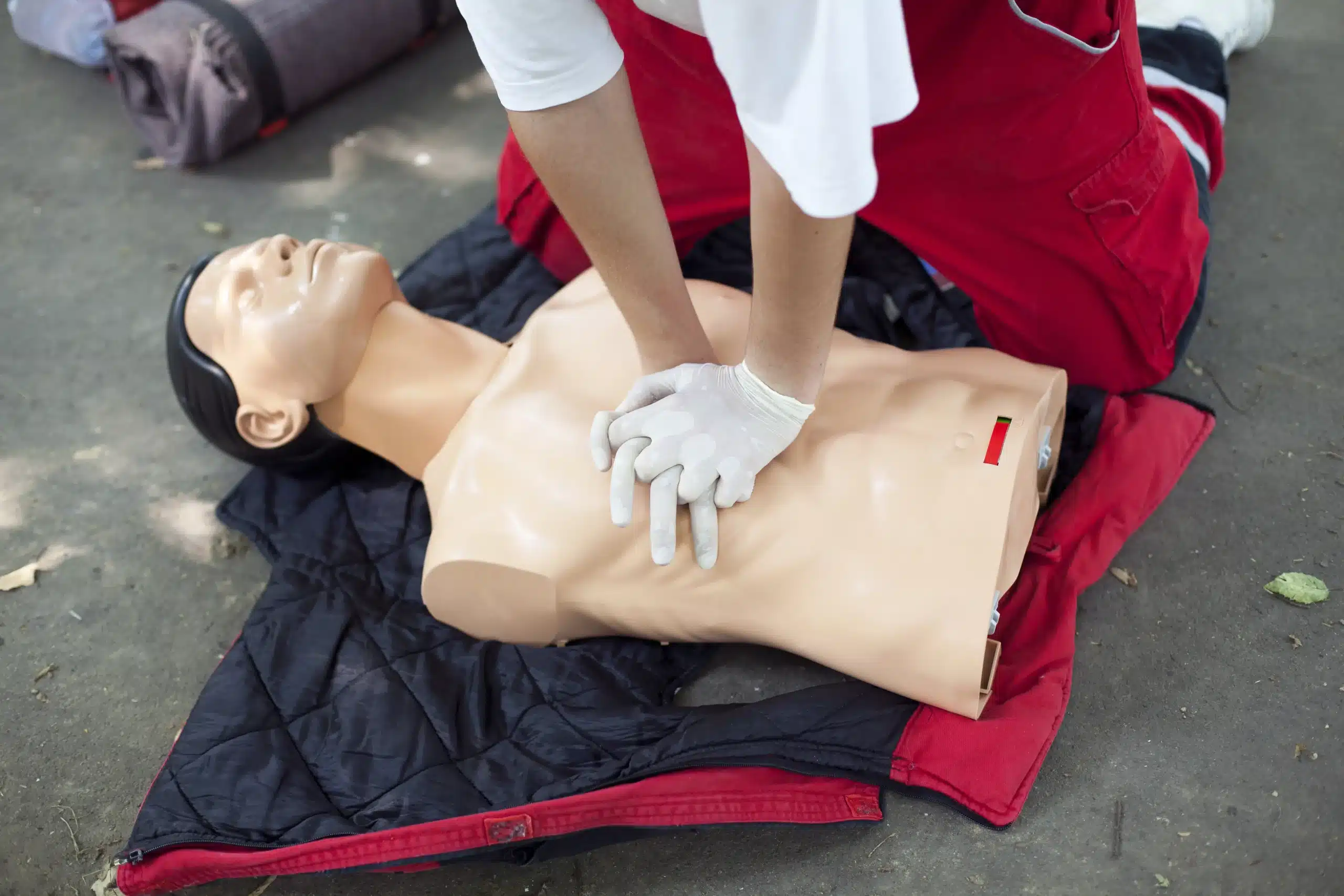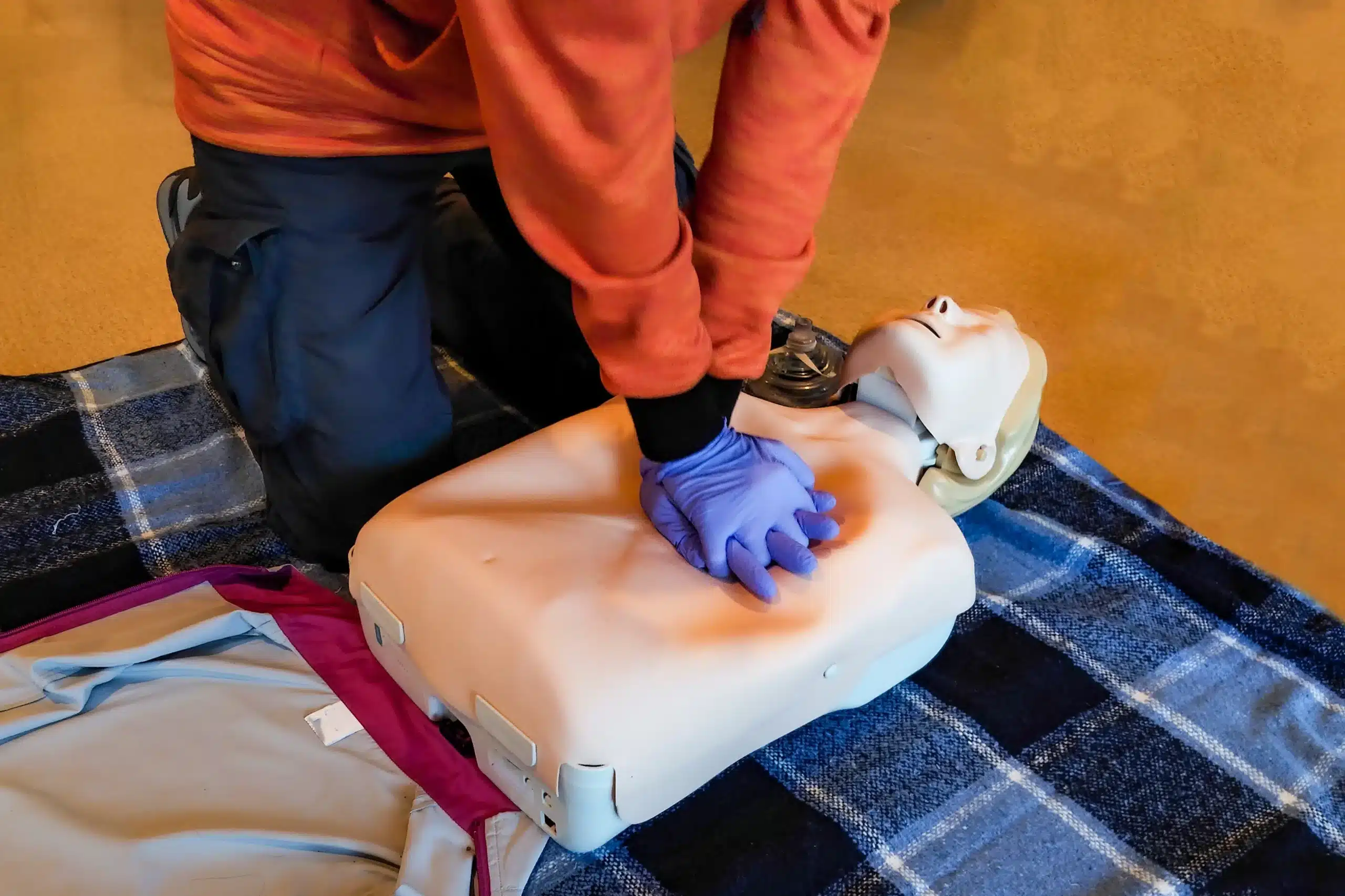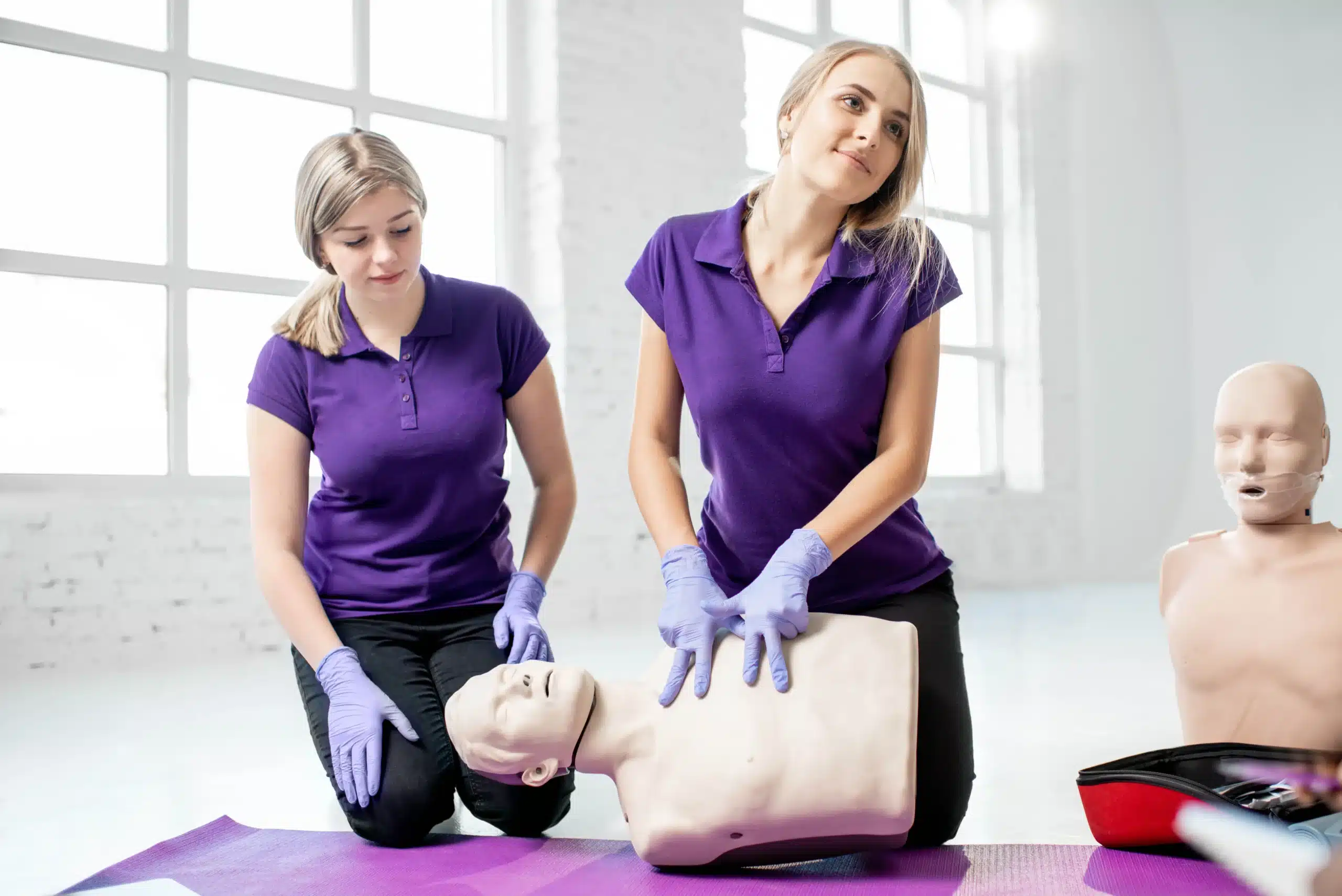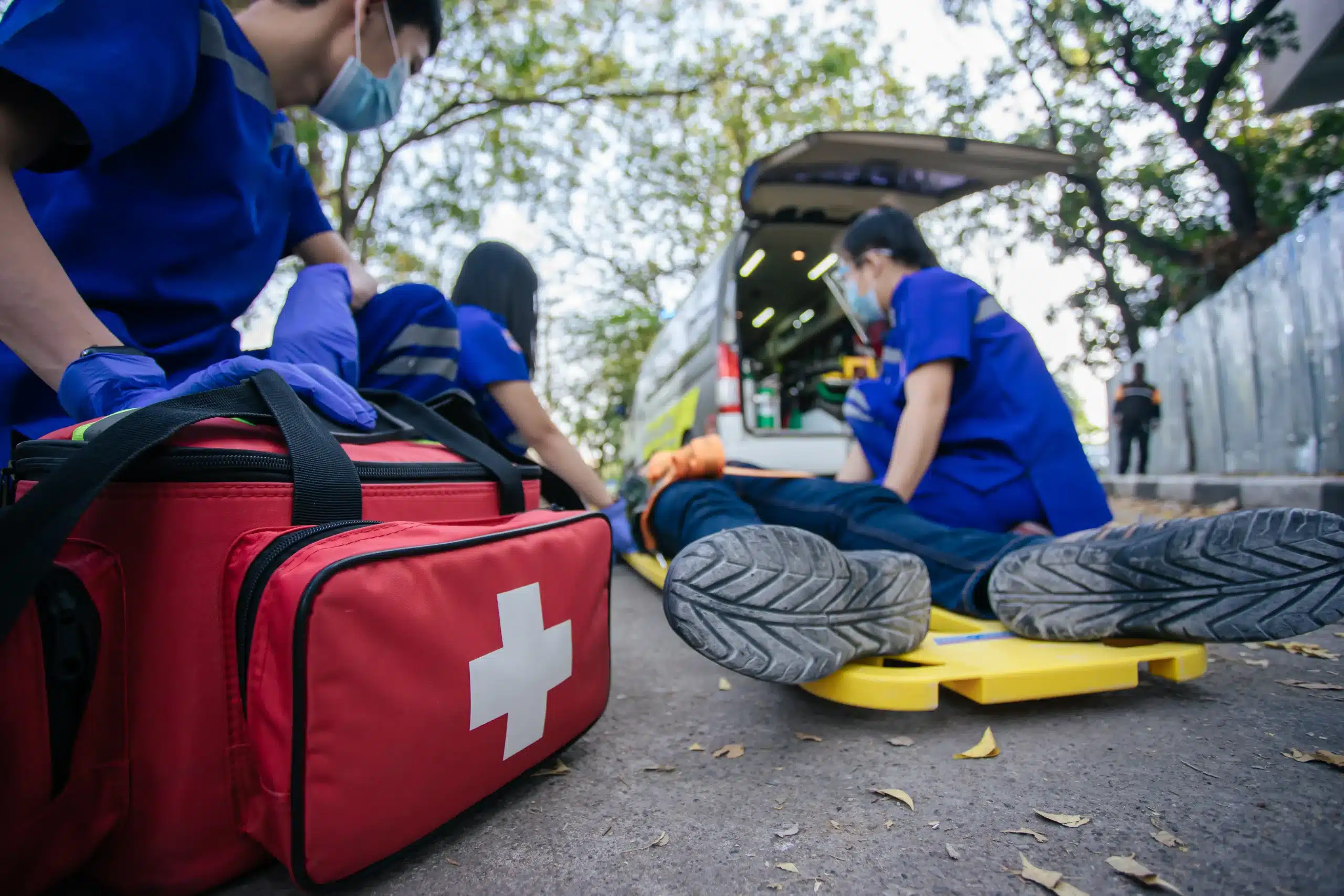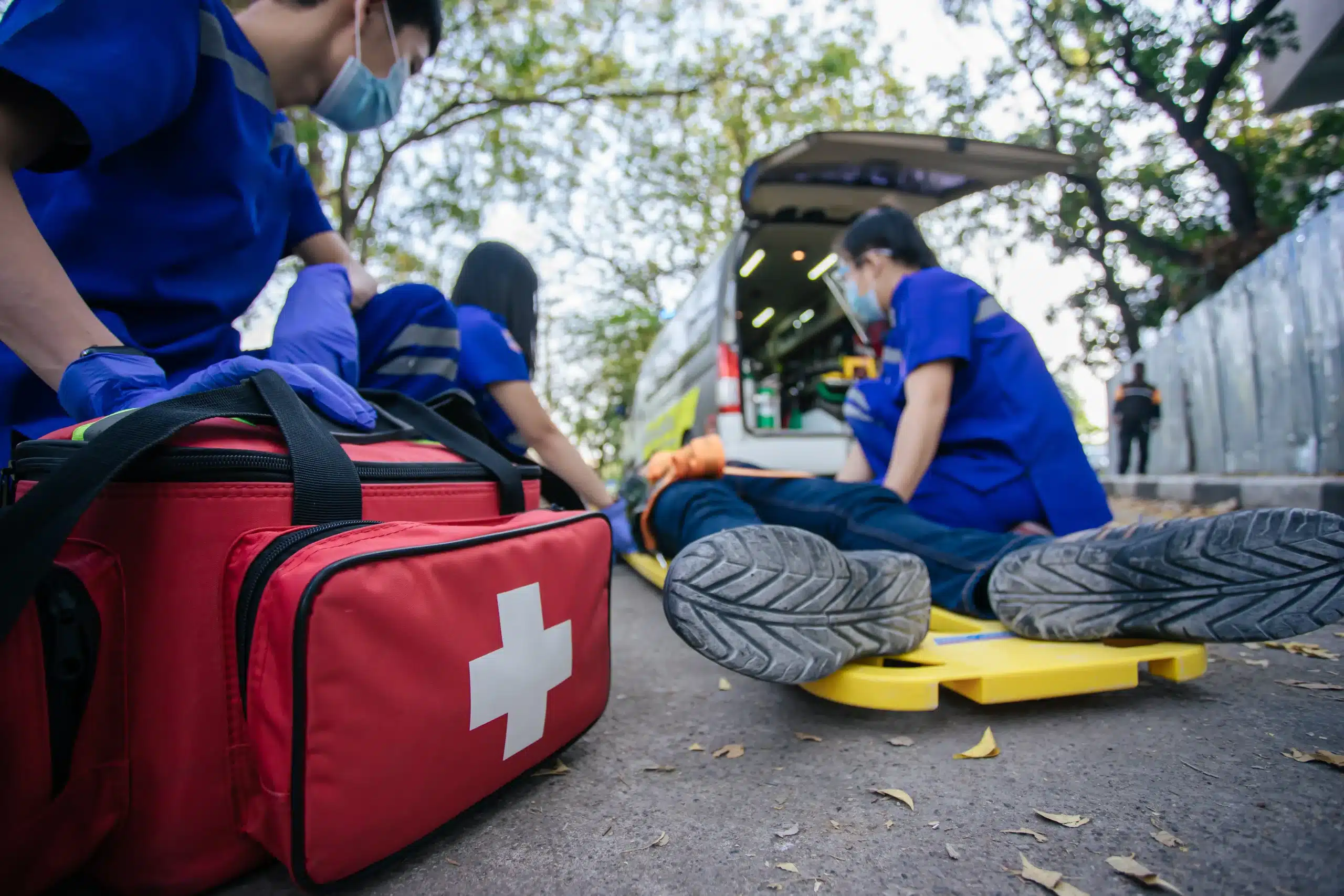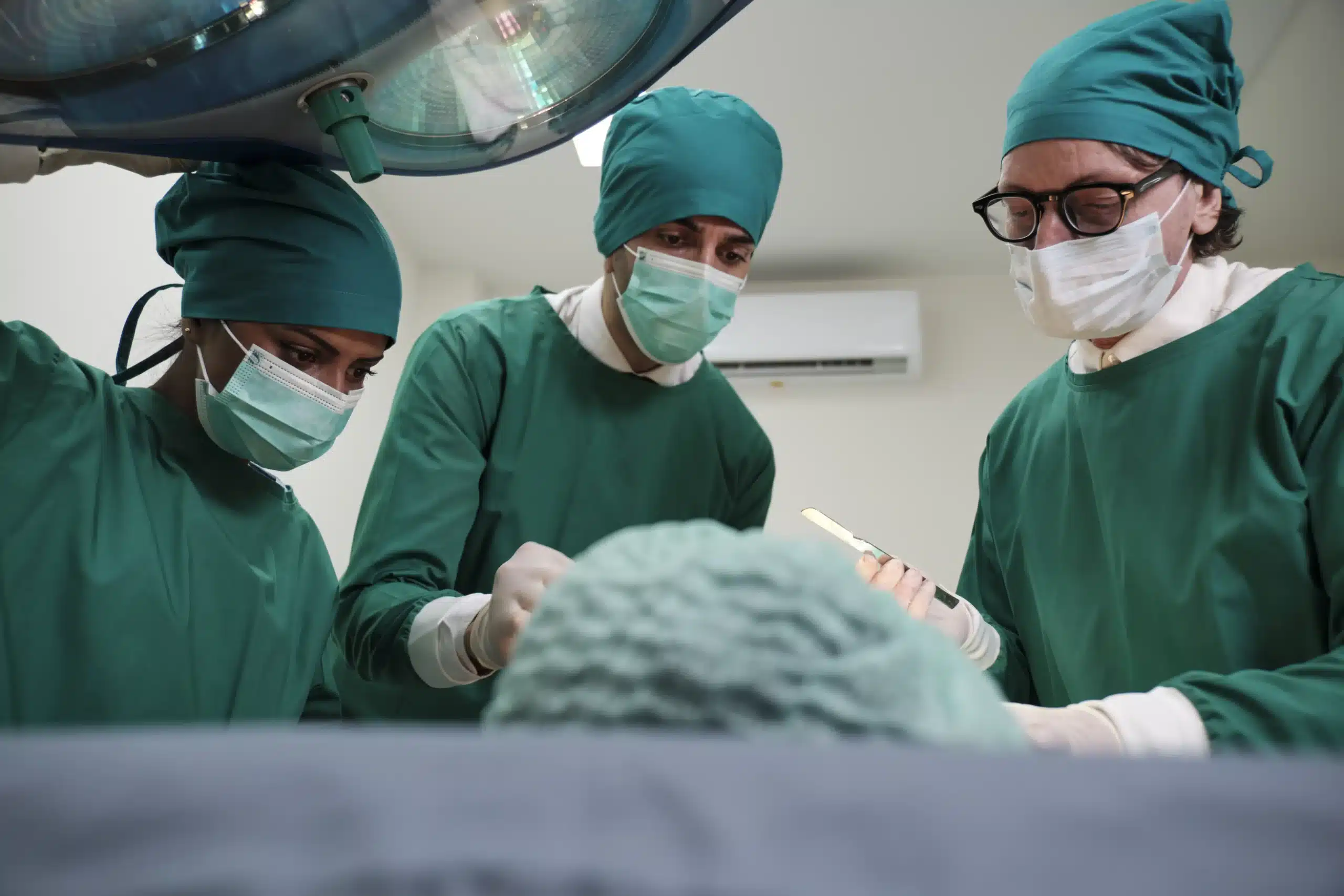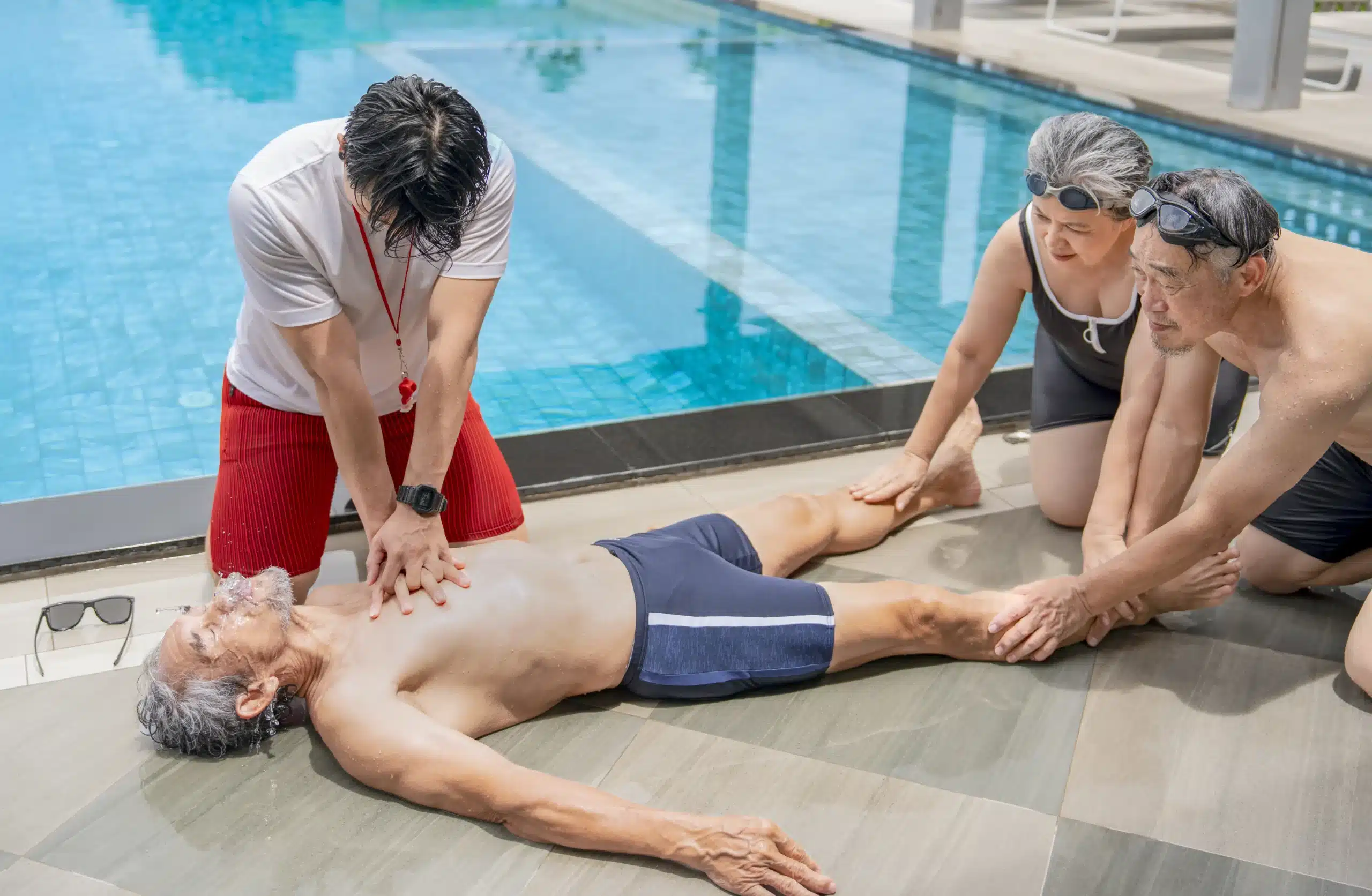Medical emergencies can happen anytime, anywhere. Being equipped with the skills to respond effectively can make a world of difference. Basic Life Support (BLS) certification provides the training you need to assist individuals experiencing cardiac arrest, respiratory distress, or an obstructed airway. This comprehensive guide will explore the ins and outs of BLS certification, including its importance, the skills you’ll learn, and who can benefit from this training. We’ll also delve into finding “BLS certification near me,” choosing the right training format, understanding the costs involved, and maintaining your certification. Whether you’re a healthcare professional or simply someone who wants to learn life-saving skills, this guide is for you.
Key Takeaways
- BLS certification empowers anyone to respond to emergencies. It’s a valuable skill set for healthcare professionals and anyone wanting to learn life-saving techniques. Find a course format—in-person, online, or blended—that suits your learning style.
- Research local training providers and use online resources to find the right BLS course. Consider factors like accreditation, instructor experience, and schedule flexibility. Compare costs and look for low-price guarantees.
- Keep your BLS skills current through regular recertification. Renew your certification every two years to stay up-to-date on the latest guidelines and maintain your confidence in emergency situations. Explore convenient recertification options to fit your schedule.
What is BLS Certification?
Basic Life Support (BLS) certification equips you with the skills to respond to life-threatening emergencies. It’s a crucial credential for healthcare providers and anyone interested in learning essential lifesaving techniques. BLS focuses on providing immediate care to victims experiencing cardiac arrest, respiratory distress, or an obstructed airway.
Definition and Importance
BLS certification goes beyond basic first aid. It emphasizes early intervention with high-quality CPR and emphasizes the importance of teamwork in emergency situations. This training provides the knowledge and confidence to act quickly and effectively when every second counts. For healthcare professionals, BLS certification is often a job requirement, demonstrating a commitment to patient safety and high-quality care. But it’s not just for healthcare workers; anyone can benefit from having these lifesaving skills. You can find more information on BLS Certification for healthcare professionals in this helpful guide. Having a current BLS certification shows your dedication to providing the best care and can increase your career opportunities. BLS certification is vital for every nurse as it helps them handle emergencies and save lives.
Skills You’ll Learn
In a BLS certification course, you’ll master a range of essential skills, including high-quality CPR for adults, children, and infants. You’ll also learn how to use an automated external defibrillator (AED), a device that can help restore a normal heart rhythm. The course covers techniques for relieving choking and basic airway management to ensure adequate breathing. Importantly, BLS training also emphasizes the importance of effective team dynamics during emergencies, preparing you to work seamlessly with others to provide the best possible care. These courses also teach practitioners how to recognize emergencies and work effectively in teams.
Who Needs BLS Certification?
While BLS certification is often mandatory for healthcare professionals like doctors, nurses, and paramedics, it’s valuable for a much wider audience. Anyone working in a healthcare setting, including medical assistants, dental professionals, and physical therapists, can benefit from this training. Other professions where BLS certification is highly recommended include lifeguards, firefighters, teachers, coaches, and childcare providers. Even if it’s not required for your job, having BLS skills can empower you to assist family, friends, or community members during an emergency. This guide explains why most healthcare institutions require nurses to have BLS certification. If you’re considering a career in healthcare, BLS certification is a great first step, demonstrating your commitment to patient care and providing a foundation for more advanced training. You can find more information on who needs BLS certification.
Find BLS Certification Courses Near You
Finding the right BLS certification course often starts with understanding your local options and using available search tools. Here’s a breakdown of how to find BLS classes near you:
Local Options in Santa Clara
If you’re in Santa Clara, San Jose, or Milpitas, you have excellent local resources for BLS certification. Santa Clara CPR Classes offers various American Heart Association certification courses, including BLS, with convenient schedules and a low-price guarantee. They’ve been serving the community since 1989, so they have a deep understanding of local needs. For those interested in other certifications, they also offer ACLS, PALS, and First Aid training. You can easily contact them to learn more.
The American Red Cross also provides BLS certification courses in California, often geared towards healthcare professionals and first responders. Checking their website for local classes is a good starting point.
Online Search Tools
The internet is a powerful tool for finding BLS certification courses. A quick search for “BLS certification near me” will yield numerous results, including training centers, community organizations, and online providers. The American Red Cross even offers a blended learning program that combines online coursework with in-person skills sessions. This can be a convenient option for those with busy schedules.
Hospitals and Medical Centers
Many hospitals and medical centers offer BLS certification courses, often for their staff but sometimes open to the public. These courses are typically high-quality and aligned with the latest healthcare practices. Contacting your local hospitals or checking their websites can reveal potential training opportunities. This is particularly relevant for nurses, as BLS certification is often a requirement for many nursing positions.
Community Colleges and Universities
Community colleges and universities frequently offer BLS certification courses as part of their continuing education programs or within healthcare-related degree programs. These courses can be a cost-effective way to gain certification and are often accessible to community members. Check the websites of colleges near you or reach out to their continuing education departments for more information. As with hospitals, this is a valuable option for nurses, since employers often require BLS certification.
Choose the Right BLS Training Format
Finding the right BLS training format depends on your learning style, schedule, and budget. Let’s break down the most common options: in-person, online, and blended learning.
In-Person Training
In-person BLS training offers a hands-on learning experience. You’ll practice skills like CPR and AED use with certified instructors who provide immediate feedback. This direct interaction is invaluable for building confidence and mastering these critical techniques. For many, the structured environment of a classroom setting helps with focus and allows for asking questions. Santa Clara CPR Classes offers in-person training, ensuring you meet American Heart Association requirements. This format is ideal if you thrive in a traditional learning environment and value face-to-face instruction.
Online Courses
Online BLS courses offer flexibility for those with busy schedules or limited access to in-person classes. You can learn at your own pace, revisiting modules as needed. Many online courses, like those offered by the American Red Cross, include interactive elements and simulations to keep you engaged and reinforce learning. While online courses offer convenience, they typically require a separate in-person skills session for hands-on practice and official certification.
Blended Learning Programs
Blended learning combines the best of both worlds. You’ll complete the theoretical coursework online at your convenience, then attend a shorter in-person session to practice your skills and complete the certification process. This format offers a balance of flexibility and hands-on training, making it a popular choice. The American Red Cross also offers blended learning programs for BLS certification. If you appreciate online learning but also want hands-on practice, a blended learning program might be the perfect fit.
Understand BLS Certification Costs
Getting BLS certified is an investment in your skills and career. Understanding the costs involved will help you budget effectively and find the best value for your training.
Average Price Ranges
BLS certification costs typically range from $30 to $150 per person. This price range is pretty broad, so you’ll find courses at various price points. The training provider and course format influence the final cost. Online BLS courses are often more affordable than in-person classes.
Factors Affecting Cost
Several factors can affect how much you’ll pay for BLS certification:
- Training Provider: Different organizations, like the American Heart Association, have their own pricing structures. It’s worth comparing a few providers in your area.
- Course Type: Online, hybrid, and in-person courses each come with different costs. Online courses tend to be more budget-friendly because you won’t have travel expenses. If you prefer hands-on learning, an in-person class might be a better fit, but factor in potential extra costs.
- Certification Status: Are you getting certified for the first time, or do you need recertification? If your certification has lapsed, you might need to take the full course again, which can be more expensive. Keep your certification current to avoid extra costs.
Low Price Guarantee Options
Look for training providers that offer a low price guarantee. Santa Clara CPR Classes offers this guarantee, meaning we’ll match or beat a lower price you find for the same course elsewhere. Doing a little research and comparing prices can help you save money and get the best deal. Contact us to learn more.
What to Expect in a BLS Course
So, you’ve decided to get your BLS certification—great! Here’s a rundown of what you can expect, from the classroom to the exam.
Course Duration and Curriculum
BLS courses are designed to be comprehensive but manageable. You can find options for individuals and organizations, with various formats like in-person, online, or a blended approach combining both. The curriculum covers essential life-saving skills, including CPR for adults, children, and infants, AED use, and obstructed airway procedures. For more information, check out the American Red Cross BLS page.
Hands-on Practice
One of the best parts of BLS training is the hands-on learning. You’ll have plenty of opportunities to practice your skills, using mannequins and other training equipment. This practical experience builds confidence and prepares you to respond effectively in a real emergency. The Red Cross often uses simulation learning for a more immersive experience.
Exams and Certification
To earn your BLS certification, you’ll need to pass a written exam and a practical skills test. The written exam covers the key concepts and procedures, while the practical test assesses your ability to perform CPR and other BLS skills correctly. Once you pass, you’ll receive your BLS certification, typically valid for two years. Online BLS courses often provide digital materials and self-paced learning. While some online resources offer free BLS training, official certification usually requires a fee.
Maintain Your BLS Certification
Keeping your BLS certification current is essential for any healthcare provider or first responder. It ensures you’re up-to-date on the latest life-saving techniques and best practices. This section covers everything you need to know about maintaining your BLS credentials.
Validity and Renewal
BLS certification is typically valid for two years. To continue practicing and stay certified, you’ll need to complete a renewal course before your current certification expires. This refresher training reinforces essential skills and knowledge, keeping you prepared for emergencies. The American Red Cross and other organizations stress the importance of regular renewal to maintain proficiency in life-saving procedures. Plan to renew your certification about a month before it expires to avoid any gaps in your credentials.
Recertification Options
You have several convenient options for BLS recertification. Many providers offer both in-person and online renewal courses, allowing you to choose the format that best suits your schedule and learning style. Some providers also offer blended learning programs that combine online modules with in-person skills sessions. Check with your certifying organization or local training centers like Santa Clara CPR Classes for available recertification options.
BLS Certification: Career Benefits
Job Market Advantages
BLS Certification is a valuable asset in today’s competitive job market. It’s often a requirement for many healthcare roles and can significantly improve your job prospects. Many healthcare institutions require or prefer nurses with this credential, especially for positions involving direct patient care and emergency response. This makes BLS Certification a smart move for anyone considering a career in healthcare, or for those already working in the field and looking to advance. Even outside of traditional healthcare settings, BLS Certification can give you an edge. Many employers, from childcare centers to fitness facilities, value employees trained to handle medical emergencies. Having this certification demonstrates your preparedness and commitment to safety, making you a more desirable candidate.
Professional Growth
Beyond the job market advantages, BLS Certification contributes to your professional growth. It empowers you with the skills and confidence to respond effectively in critical situations. The training provides healthcare professionals with the expertise to handle life-threatening emergencies, ensuring they can provide the best possible care when it matters most. BLS Certification also shows a commitment to patient safety and high-quality care, which can enhance your professional reputation. Maintaining your BLS Certification demonstrates a dedication to ongoing learning and professional development, which is highly valued in any field. Whether you’re a seasoned healthcare provider or just starting your career, BLS Certification is an investment in your professional future. It equips you with essential, life-saving skills and enhances your credibility, contributing to both your personal and professional growth. Understanding BLS principles is crucial for healthcare workers and patient safety.
Select a Quality BLS Training Provider
Finding the right BLS training provider is crucial for a valuable learning experience. Here’s what to consider:
Accreditation and Recognition
Make sure your chosen provider offers training aligned with nationally recognized organizations like the American Heart Association (AHA). AHA-compliant BLS certification is widely accepted and demonstrates a commitment to high standards. This accreditation is especially important for healthcare professionals, as BLS certification equips them with the skills to respond to critical situations, according to this guide to BLS Certification for Nursing Professionals. Look for providers with a proven track record and positive student reviews.
Instructor Qualifications
Experienced, certified instructors make all the difference. Instructors should have extensive healthcare experience and current certifications. This ensures they can effectively teach the comprehensive material covered in BLS training, including advanced life support measures, as highlighted in this overview of BLS certification. Ask about an instructor’s background and credentials before enrolling.
Class Size and Schedule Flexibility
Consider class size and scheduling options. Smaller classes often allow for more personalized instruction. Flexible scheduling, including weekend or evening classes, can accommodate busy schedules. BLS training is available in various formats, including in-person, online, and blended learning—find a format and schedule that works for you. If you’re in the Santa Clara area, Santa Clara CPR Classes offers convenient options. Contact them to learn more about class schedules.
Common BLS Certification Misconceptions
There are several misconceptions surrounding BLS certification. Let’s clear up a few of the most common misunderstandings:
“Only for Healthcare Professionals”
Many people believe BLS certification is only for doctors and nurses. While it’s certainly a vital skill for healthcare providers, BLS certification benefits anyone who wants to learn life-saving techniques. From teachers and coaches to parents and childcare providers, having these skills can make a real difference in an emergency. Equipping yourself with BLS training means you’re prepared to respond effectively in critical situations, offering aid to family, friends, or even strangers until professional help arrives. Learn more about our BLS certification courses.
“Same as CPR Certification”
While CPR is a core component of BLS, they aren’t interchangeable. BLS certification is more comprehensive, covering a broader range of skills like using a bag-valve mask, relieving choking, and working effectively as a team during a medical crisis. It delves deeper into the science behind resuscitation and emphasizes high-quality chest compressions and rescue breaths. For those interested in CPR training alone, we also offer CPR and First Aid classes.
“Just a Formality”
BLS certification isn’t a one-and-done deal. Like many certifications, it requires renewal every two years. This ensures your skills and knowledge stay fresh, reflecting the latest advancements in emergency cardiovascular care. Regular recertification reinforces best practices and helps you maintain the confidence to act quickly and effectively under pressure. Explore our recertification options to stay up-to-date.
“Not Valued in the Job Market”
BLS certification is a valuable asset in many professions. Beyond healthcare, industries like education, fitness, and construction often prefer or require employees to hold a current BLS certification. It signals your preparedness to handle emergencies and demonstrates a commitment to safety, making you a more desirable candidate. Contact us to learn more about how BLS certification can enhance your career.
“Online Certifications Aren’t Credible”
While in-person training offers hands-on practice, accredited online BLS certification programs provide a flexible and convenient way to learn the same essential skills. These programs often combine interactive modules with skills testing sessions to ensure you meet the same standards as those trained in person. Online certification is a legitimate and widely accepted option for many individuals seeking BLS training.
Top BLS Certification Providers
Finding the right BLS certification provider is key to a positive and effective learning experience. Here are a few reputable organizations and training centers to consider:
Santa Clara CPR Classes
Since 1989, Santa Clara CPR Classes has specialized in providing comprehensive training in essential life-saving skills. We offer a range of American Heart Association certification courses, including BLS, ACLS, PALS, and First Aid. Our convenient schedules and low price guarantee make high-quality training accessible. Serving Santa Clara, Milpitas, and San Jose, we’re your local resource for BLS certification. Contact us today to learn more.
American Heart Association
The American Heart Association (AHA) sets the standard for CPR and emergency cardiovascular care. They offer a variety of BLS training courses designed for healthcare providers and other professionals. With options for in-person and online learning, the AHA provides flexibility for busy schedules.
American Red Cross
The American Red Cross is another well-respected provider of BLS training. They offer various course formats, including online, in-person, and blended learning. Red Cross BLS certification is valid for two years, aligning with standard renewal guidelines.
National Health Care Provider Solutions
National Health Care Provider Solutions (NHCPS) offers accredited and internationally recognized BLS certification and renewal. They provide a free online course for learning BLS fundamentals, with an additional fee for official certification.
ProTrainings
ProTrainings offers a wide range of online and in-person BLS courses. They focus on providing affordable and accessible training. Check their website for specific course offerings and availability in your area.
Health & Safety Institute (HSI)
HSI is a trusted provider of safety training, including BLS certification. They offer various learning formats and specialize in providing comprehensive training solutions for workplaces. Explore their website to find BLS courses that meet your specific needs.
Related Articles
- BLS Certification in San Jose: Your Complete Guide – Santa Clara CPR Classes
- BLS Training Near Me: A Practical Guide – Santa Clara CPR Classes
- BLS Classes in Santa Clara: The Complete Guide – Santa Clara CPR Classes
- BLS Certification in Santa Clara: A Guide for Healthcare Providers – Santa Clara CPR Classes
- Find BLS Recertification Classes Near Me – Santa Clara CPR Classes
Frequently Asked Questions
How long does BLS certification last? BLS certification is typically valid for two years. It’s important to renew your certification before it expires to maintain your credentials and stay up-to-date on the latest life-saving techniques.
What’s the difference between BLS and CPR certification? CPR is a core component of BLS, but BLS certification covers a wider range of skills. In addition to CPR, BLS training includes techniques for using a bag-valve mask, relieving choking, and working effectively in a team during a medical emergency. BLS also delves deeper into the science behind resuscitation.
Is online BLS certification credible? Yes, accredited online BLS certification programs are a legitimate and widely accepted way to learn essential life-saving skills. These programs often combine interactive online modules with in-person skills testing sessions to ensure you meet the same standards as those trained in a traditional classroom setting.
Who should get BLS certified? While BLS certification is often a requirement for healthcare professionals, it’s a valuable skill for anyone to have. Teachers, coaches, childcare providers, parents, and anyone interested in learning life-saving techniques can benefit from BLS training.
How much does BLS certification cost? The cost of BLS certification varies depending on the training provider, course format (online, in-person, or blended), and whether you’re getting certified for the first time or recertifying. Generally, prices range from $30 to $150. Look for providers that offer a low-price guarantee to ensure you’re getting the best value.
